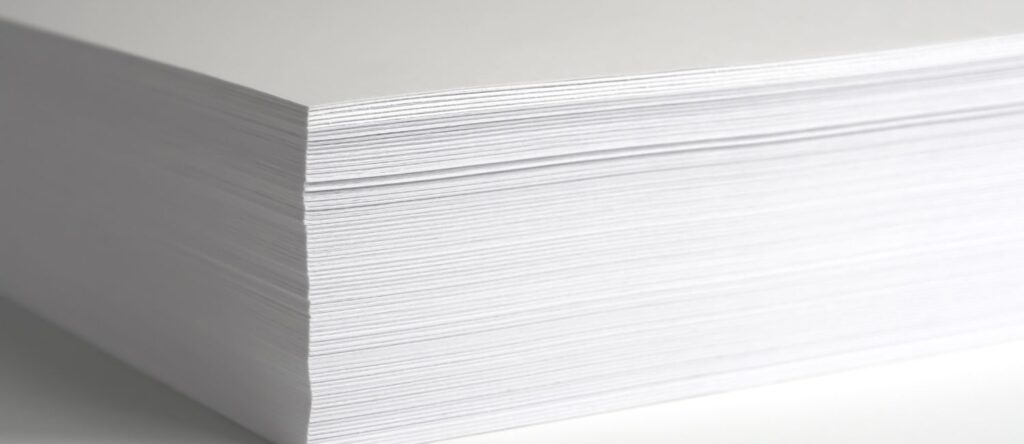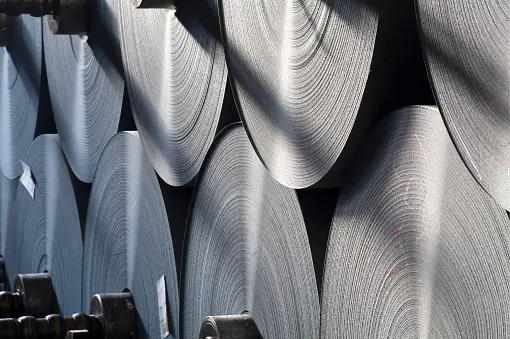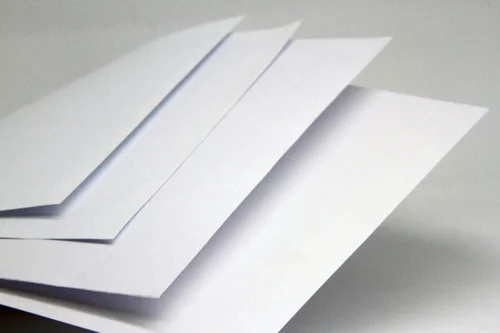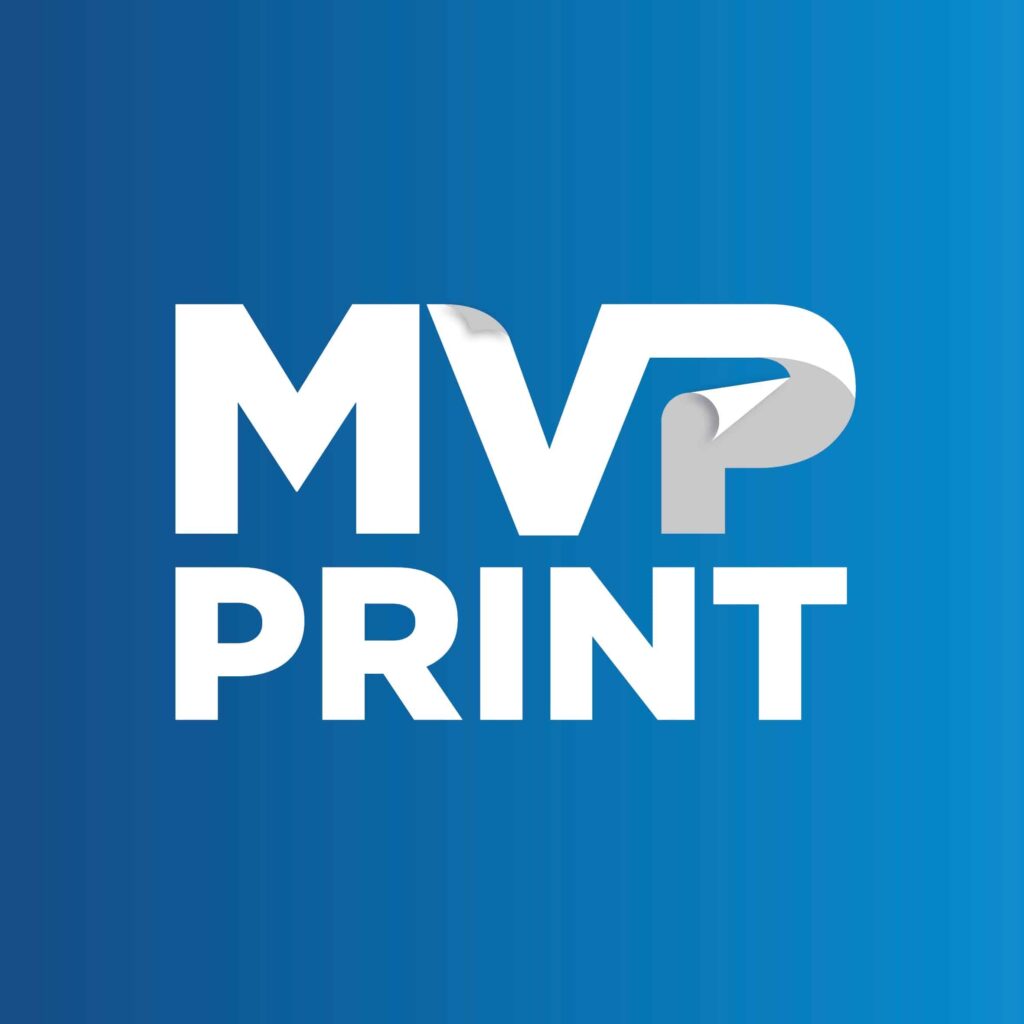
In the realm of printing and paper products, ‘GSM’ is a key metric that professionals must grasp. GSM, or ‘grams per square meter’, measures paper weight. The heavier the paper, the higher its GSM value, indicating superior quality. This weight is calculated by cutting a square meter of paper and weighing it. The resulting GSM value categorises paper stocks for diverse printing needs. A comprehensive GSM paper guide can help you understand the significance of GSM in determining the quality of printed materials and assist in selecting the right paper based on its GSM category.
Introduction to GSM Paper
GSM paper is a fundamental concept in the world of printing and paper products. GSM stands for grams per square meter, a unit of measurement that determines the weight and thickness of paper. This metric is crucial for various industries, including printing, packaging, and crafting, as it helps in selecting the right paper for different applications. Understanding GSM paper is essential for anyone involved in producing printed materials, from household printer paper to professional printing projects.
What is GSM Paper?
GSM paper is defined by its weight, measured in grams per square meter (gsm). This measurement indicates how much a square meter of the paper weighs, providing a standard way to compare the thickness and durability of different paper types. GSM paper is widely used across various industries, including printing, packaging, and crafting, due to its versatility and reliability. Whether you’re printing a simple flyer or a high-quality brochure, knowing the GSM of your paper helps ensure you choose the right material for your needs.
How is GSM Paper Measured?
The measurement of GSM paper involves weighing a square meter of the paper to determine its weight in grams. This weight is then expressed as grams per square meter (gsm). The higher the gsm value, the heavier and thicker the paper. For example, a 300gsm paper is significantly thicker and more durable than a 100gsm paper. This measurement is crucial for understanding the paper’s suitability for different printing tasks, from lightweight flyers to sturdy business cards.
What Does GSM Paper Mean in Printing?
GSM, or ‘grams per square metre’, is a key metric in the printing world. It measures the paper’s weight, with higher values indicating thicker, more durable paper. Knowing GSM is essential for assessing the quality and durability of printed materials.
Explanation of GSM and its Relation to Paper Weight
The GSM of paper is directly linked to its weight and thickness. For instance, a 150gsm flyer is light and easy to fold, whereas a 250gsm flyer is sturdier. GSM measures the weight of a square metre of paper, regardless of its actual size.
Examples of Different GSM Values and Their Corresponding Paper Thicknesses
- A 55gsm paper is light and thin paper, while a 400gsm paper is heavy and durable.
- Business cards and brochures usually have a GSM of 300-350 to look professional and last longer.
- Flyers and posters often use 80-100 GSM for a light feel that’s still durable.
- Booklets and menus benefit from 150-200 GSM for a substantial feel and to withstand frequent use.
Grasping the connection between GSM and paper thickness is vital when choosing the right paper for your printing needs. This applies to everything from business cards to flyers and more.
Why Do Different GSM Paper Weights Exist?

The world of printed materials is incredibly diverse. GSM (Grams per Square Meter) paper weights cater to the unique needs of various printed products. From delicate greeting cards to sturdy business cards and large posters, the paper weight greatly influences the quality, durability, and visual appeal.
Suitability of different GSM values for various printed products
A greeting card, for example, needs a heavier stock, usually between 300-450 GSM. This ensures it stands upright and keeps its shape when displayed. In contrast, a poster might benefit from a lighter 120-150 GSM paper. Here, the focus is on visual impact rather than physical weight.
Business cards often use a premium 450 GSM stock to convey quality and durability. Meanwhile, documents like receipts, bills, and manuals are printed on more economical 30-90 GSM paper. Envelopes typically use a lighter 30-60 GSM paper, while notepads prefer a medium-weight 75-90 GSM stock.
The choice of GSM is not just about looks; it’s also critical in the manufacturing process and the product’s lifespan. Heavier GSM papers are more durable, ideal for items needing a long shelf life, like exhibition flyers or brochures. Lighter GSM options, however, are more cost-effective for large print runs. Understanding the GSM value is crucial when selecting the right paper for any printed paper product, whether it’s a business card, invitation, or poster.
Should I Go for the Lowest GSM to Save Money?
Choosing the right paper weight, or GSM (grams per square meter), for your printed materials is crucial. The temptation to opt for the lowest GSM to save money is understandable. However, it’s vital to balance cost-effectiveness with the durability and quality of your final product.
A lower GSM paper, such as those in the 70-100 GSM range, is often used for standard copier and printer paper. It’s a cost-effective option for short-term, low-impact items like flyers for a one-off event. These lighter papers are suitable for items that don’t need to withstand frequent handling or long-term use.
For printed products requiring more durability, such as exhibition handouts, reusable marketing materials, or high-quality stationery, a higher GSM paper is recommended. Papers in the 150-300 GSM range are more resilient against tearing, wrinkling, or curling. They are essential for items that are frequently handled.
Finding the right balance between cost and quality is key when selecting the appropriate GSM for your needs. While a lower GSM may be cheaper in the short term, investing in a higher-quality, heavier paper could be more cost-effective in the long run. This ensures your printed materials remain in good condition and maintain a professional appearance.
Guide to Paper Weight: What are the Different GSM Paper Weights?

Paper weight is a critical factor in printing. GSM, or grams per square meter, is the standard for measuring paper weight. Knowing the various GSM ranges aids in selecting the ideal paper for your printing tasks. This applies to everything from household printer paper to specialized materials.
Common GSM Paper Ranges
- 35-55 GSM: The thinnest form of regular paper, mostly used for newspapers.
- 90-120 GSM: The average weight of regular office paper or copy paper, suitable for everyday printing and copying.
- 130-250 GSM: The weight most commonly used for promotional posters, flyers, and other printed products that need a bit more heft.
- 260-300 GSM: Thicker but still bendable card weight, which works well for high-end brochures, magazines, and similar applications.
- 350-450 GSM: The heaviest and most rigid card, commonly used for business cards, invitations, and other special projects that require a substantial feel.
The GSM range can vary significantly based on the paper type and intended use. For instance, notebook paper usually ranges from 80-90 GSM. Book paper generally falls between 60-130 GSM. Cardstock, however, is typically between 250-400 GSM.
Understanding the different GSM paper weights is crucial for making informed choices. It ensures your printed products have the desired look and feel.
Common GSM Paper Sizes and Measurements
The size of paper is as crucial as its weight in printing. Paper sizes follow ISO (International Organization for Standardization) A, B, and C standards. These standards measure dimensions in metres and millimetres. For instance, A4 is 210 x 297mm, A6 is 105 x 148mm, and B2 is 500 x 707mm.
The GSM (grams per square metre) measures the weight of a square metre of paper. This means a 120GSM A4 sheet weighs the same as a 120GSM A3 sheet, despite their different sizes.
Here’s a look at some common GSM paper sizes and their measurements:
- A4 (210 x 297mm)
- A3 (297 x 420mm)
- A5 (148 x 210mm)
- B2 (500 x 707mm)
- B4 (250 x 353mm)
- B5 (176 x 250mm)
Understanding the correct size and GSM of your paper is vital for printing success. The GSM indicates the weight of one square metre of paper. It’s a key factor to consider alongside the physical dimensions.
What is GSM Paper? Understanding the Basics
GSM, or ‘grams per square metre’, is a key metric in paper measurement. It shows the paper’s weight by weighing a square metre of it. The higher the GSM, the heavier and thicker the paper is.
Defining GSM and Its Importance
GSM is a global standard for classifying paper by weight and thickness. It’s vital because it decides if the paper is right for different printed items. Knowing GSM helps you choose the best paper for your printing projects.
Why Paper Weight Matters
The paper’s weight, as shown by GSM, affects its durability and quality. Lighter, lower GSM papers are cheaper but not as durable. They’re good for short-term items like flyers. In contrast, heavier, higher GSM papers are pricier but last longer. They’re ideal for lasting items like business cards and premium marketing materials.
Understanding GSM and paper weight lets you pick the perfect paper for your printing needs. Whether it’s for high-end branding materials or budget-friendly promotions, the right choice is crucial.
Understanding Paper Thickness
Paper thickness is a critical factor to consider when selecting the right paper for any project. While GSM paper provides a good indication of thickness, it’s not the only aspect to consider. The paper’s density, texture, and the presence of air pockets can also influence its thickness. Understanding these factors alongside GSM helps in making an informed choice for your specific needs.
Paper Thickness and GSM
Although GSM is a reliable indicator of paper thickness, it’s essential to consider other factors that can affect the paper’s feel and performance. Two papers with the same gsm value might have different thicknesses due to variations in density, texture, and air pockets. For instance, a 150gsm paper with a high density will feel thicker and more substantial than a 150gsm paper with a lower density. Therefore, when choosing the right paper for your project, it’s crucial to consider both the gsm value and the paper’s physical properties to ensure it meets your requirements.
GSM Paper Types and How They’re Used
In the realm of paper, the term “GSM” (grams per square meter) is key to grasping the variety of types and their uses. This guide will illuminate the standard GSM ranges and their typical applications. It aims to assist you in making informed choices for your printed paper products.
Exploring the GSM Spectrum
The GSM paper types cover a broad spectrum, meeting various printing requirements. Let’s explore the specifics:
- 35-55 GSM: This is the lightest category, used for newsprint and tracing paper.
- 75-90 GSM: Sketchpads and notebooks typically fall within this range.
- 90-100 GSM: This is the standard for everyday printer paper in homes and offices.
- 120-140 GSM: Promotional posters and movie posters often use this range.
- 210-300 GSM: Magazine covers, high-quality flyers, and watercolour paper usually fall here.
- 350-450 GSM: This category includes thick, rigid cardstock for business cards, invitations, and postcards.
Understanding the GSM range of different paper types ensures your printed products are not just visually appealing. They also meet their intended purpose effectively.
“Different GSM paper types allow for a wide range of printed materials, from lightweight newsprint to thick, luxurious cardstock.”
Measuring Paper Weight: Other Systems

GSM (grams per square meter) is a well-known metric for paper weight. However, other systems like caliper and basis weight are also used worldwide. These methods measure paper thickness and weight in different ways.
Caliper: Measuring Paper Thickness
The caliper system measures paper thickness in 1/1000 of an inch, or points. It offers a precise way to define paper dimensions. This is crucial for items needing a specific thickness, like book covers or premium packaging.
Basis Weight: Categorising by Paper Type
In the United States and Canada, basis weight is used. It calculates the weight of 500 sheets of the paper’s basic size. This method categorises paper types, making it easier to compare different grades for various printed products.
These systems provide unique ways to measure paper thickness and weight. They meet the needs of different regions and applications. Knowing about caliper, basis weight, and GSM ensures the right paper is chosen for your printing or packaging needs.
Choosing the Right GSM for Your Printed Materials
Choosing the right GSM (grams per square meter) for your printed materials is crucial. The GSM affects the quality, durability, and overall look of your products. This includes everything from business cards to movie posters.
Factors to Consider
When selecting the GSM for your printed materials, consider several key factors:
- Intended Use and Durability: Think about the product’s purpose and how much it will be handled. Business cards need a higher GSM for durability, while flyers can get by with a lower GSM.
- Perceived Quality and Premium Feel: Thicker papers, like those in the 250-400 GSM range, offer a luxurious feel. They’re ideal for items like wedding invitations and magazine covers.
- Cost-Effectiveness: Higher GSM papers feel more substantial but are pricier. Lower GSM options are more budget-friendly for items like greeting cards.
- Compatibility with Printing Process: Different printing methods suit various GSM ranges. A professional printer can guide you to the best GSM for your project.
By weighing these factors, you can pick the right GSM paper. This ensures your printed materials meet your quality, budget, and performance needs.
MVP Print: Your Partner for Professional Printing

At MVP Print, we grasp the significance of picking the correct GSM (grams per square meter) paper for your printed materials. Our team of printing experts is committed to assisting you in selecting the ideal paper weight for your project. This could be anything from business cards to flyers, brochures, or other printed items.
Expertise in Selecting the Right GSM
Our profound understanding of paper weights and their applications enables us to offer customised recommendations. These recommendations are designed to achieve the best outcomes for your printed materials. We collaborate with you to comprehend your needs, budget, and the purpose of the printed items. Then, we propose the GSM that aligns with your objectives.
For instance, did you know that 80% of business cards are printed on 310gsm paper stocks and often laminated for enhanced durability and quality? Additionally, for books and magazines, the cover weight typically falls between 250gsm and 350gsm. Meanwhile, inner pages are usually 80gsm to 150gsm, striking a balance between robustness and cost-effectiveness.
Our vast expertise in GSM paper selection guarantees that you’ll receive the appropriate gsm paper for your printed materials. Whether you’re creating business cards, flyers, brochures, or any other printed products, MVP Print ensures your materials will have the perfect weight and quality. This will leave a lasting impression on your audience.
Choose MVP Print as your partner for all your professional printing requirements. Reach out to us today to discover how we can assist in selecting the right GSM paper for your project.
Conclusion
Grasping the concept of GSM paper and its link to paper weight is essential for picking the ideal materials for your printed materials. GSM offers a standardised metric for paper thickness, influencing the item’s durability and quality perception. This metric is key to ensuring your printed items meet your expectations.
When deciding on the GSM for your printing project, consider the item’s purpose, your budget, and the desired aesthetic. MVP Print’s expertise can guide you in selecting the perfect GSM for your printed materials. This ensures your materials not only impress but also fulfill your business objectives.
Whether crafting business cards, event invites, or promotional posters, knowing the various GSM paper weights and their uses is vital. Choosing the right GSM for your project can significantly enhance the professionalism and impact of your printed materials.








